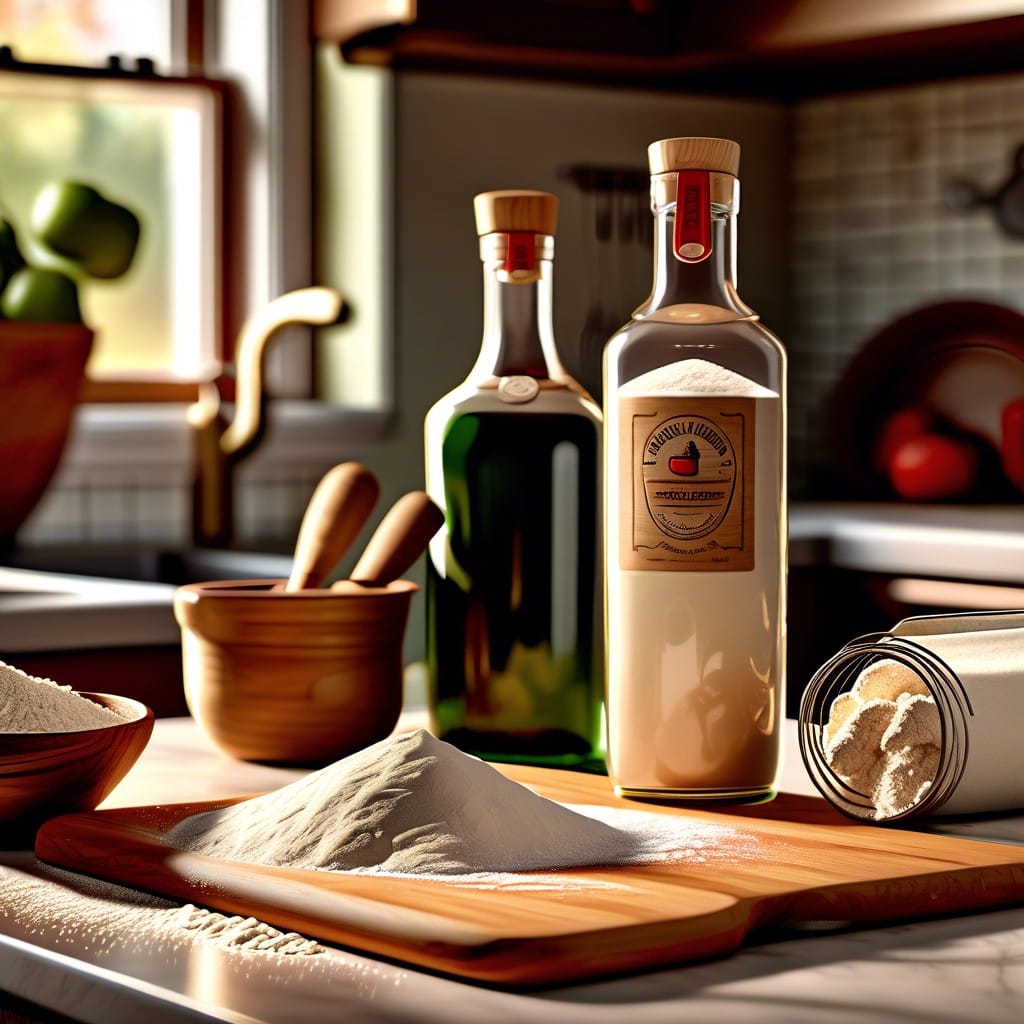Last updated on
Understanding how long it takes for latex paint to dry is essential because it helps optimize painting projects, eliminate potential mishaps, and achieve superior results.
Key takeaways:
- Latex paint becomes dry to the touch in about an hour.
- Surface is ready for a second coat within 4 hours.
- Latex paint cures fully in up to 30 days.
- Factors like thickness, humidity, and temperature affect drying time.
- Proper ventilation and surface preparation expedite drying process.
Understanding Latex Paint Properties
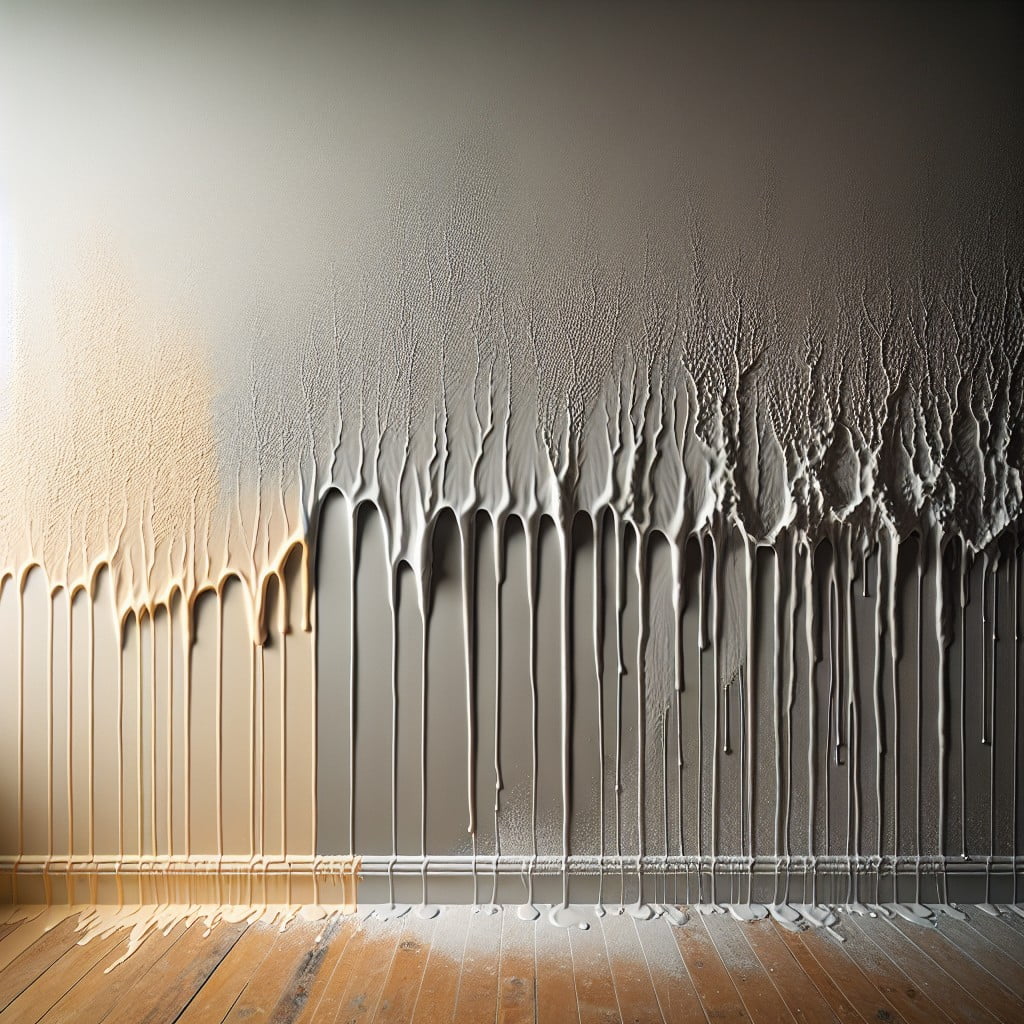
Latex paint, known for its flexibility and durability, is a water-based paint favored for both interior and exterior applications. One of its key advantages is that it emits lower levels of volatile organic compounds (VOCs), making it an eco-friendlier option compared to oil-based paints.
- Composition: Latex paints are composed of pigments for color, resins for adhesion, solvents which are primarily water, and additives to enhance properties like washability and resistance to mildew.
- Drying Mechanism: Unlike oil-based paints that dry through solvent evaporation followed by oxidative curing, latex paints primarily dry as water evaporates, allowing the remaining components to coalesce into a solid film.
- Clean Up: The water-solvent base also means that brushes and rollers can be cleaned with soap and water rather than solvents, simplifying the cleanup process.
- Flexibility: Latex paint’s composition gives it a certain elasticity, which is ideal for surfaces that might expand and contract with temperature changes.
Understanding these basic properties is essential for managing expectations about drying times and ensuring optimal application and longevity of latex paint.
Average Dry Time for Latex Paint
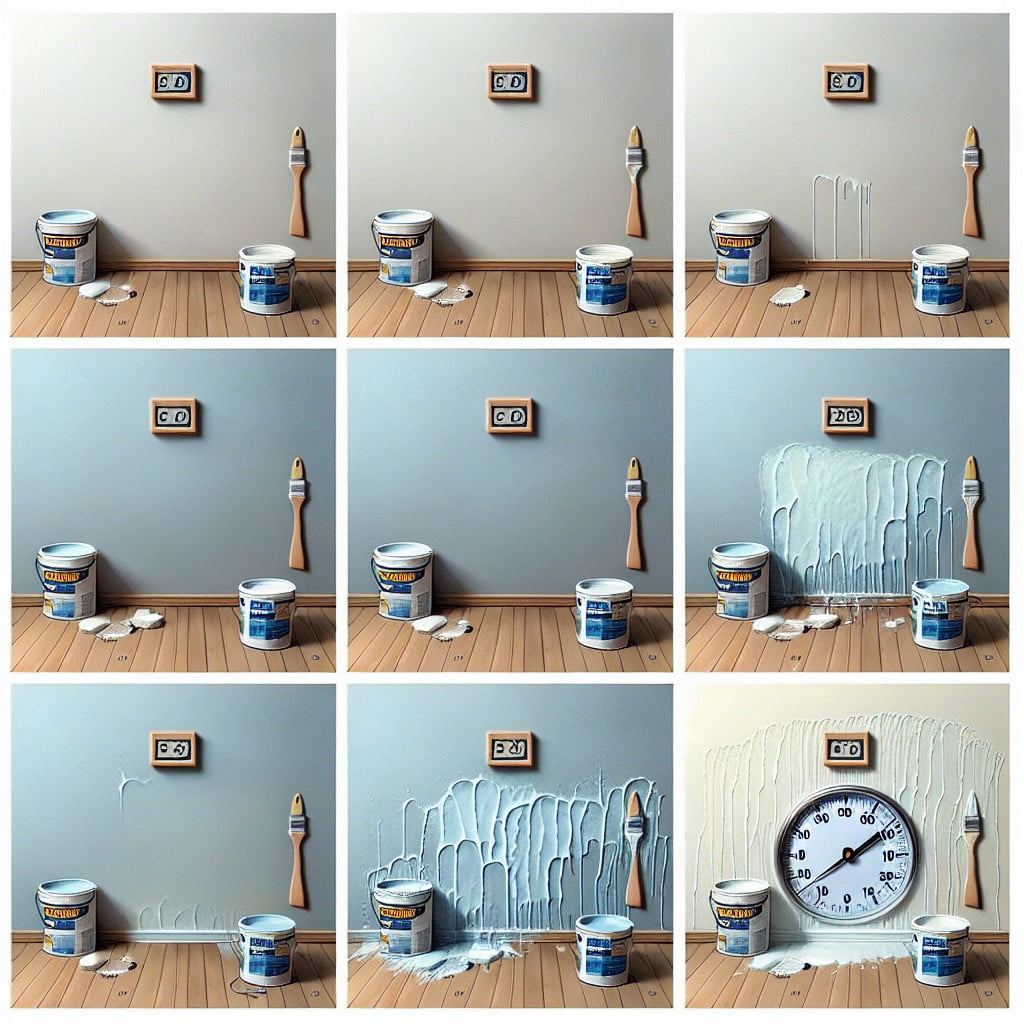
Latex paint offers a relatively quick drying time, with most varieties becoming dry to the touch in about an hour. This rapid drying process is favorable for completing projects efficiently. The specifics can vary depending on the brand and the conditions in which it’s applied, but a general timeline to expect is:
1. Surface Dry: This initial stage is when the paint is no longer wet to the touch. It typically happens within 1 hour, making it safe for another coat in a short turnaround time.
2. Ready for Re-coat: Depending on the thickness of the application and environmental factors, it’s often safe to apply a second coat within 4 hours. However, for optimal results, following the manufacturer’s recommendations is key.
3. Cured: True curing occurs when the paint has reached its maximum hardness and durability. This process can take up to 30 days. While it’s safe to touch or apply another coat after a few hours, the curing phase is crucial for the long-term life of the paint job.
It’s essential to note that while the paint may feel dry, the underlying layers might still be releasing moisture. Rushing to re-coat or reassemble a room can lead to a compromised finish, hence patience is advisable for the best outcome.
Recommended Waiting Period Between Coats
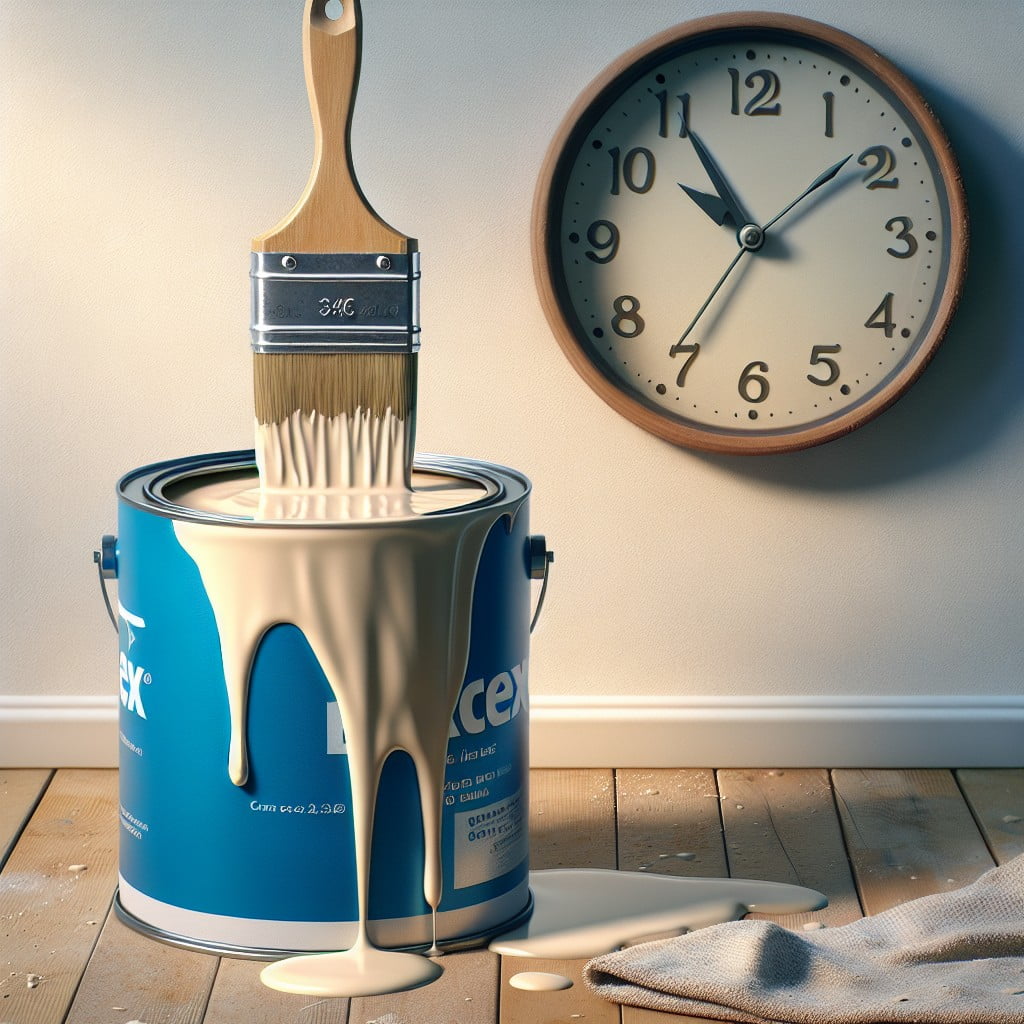
Generally, for best results, you should wait approximately two hours before applying a second coat of latex paint. This period allows the first layer to set enough to support an additional coat without smudging or streaking. However, certain factors might necessitate a longer intermission:
- Thickness of Application: A thicker first coat will take longer to dry, possibly lengthening the waiting period.
- Humidity Levels: High humidity slows the drying process, requiring a longer wait between coats.
- Temperature Conditions: Cooler temperatures can extend drying times. Aiming for a recommended painting environment of 50–85°F is ideal.
- Product Specifications: Always check the manufacturer’s recommendations on the paint can, as some formulas may vary in drying time.
To be on the safe side, if the surface feels tacky or sticks slightly when lightly touched, it needs more time to dry. Employing these guidelines ensures optimal adherence and a smooth, even finish.
Influence of Temperature and Humidity On Latex Paint Drying
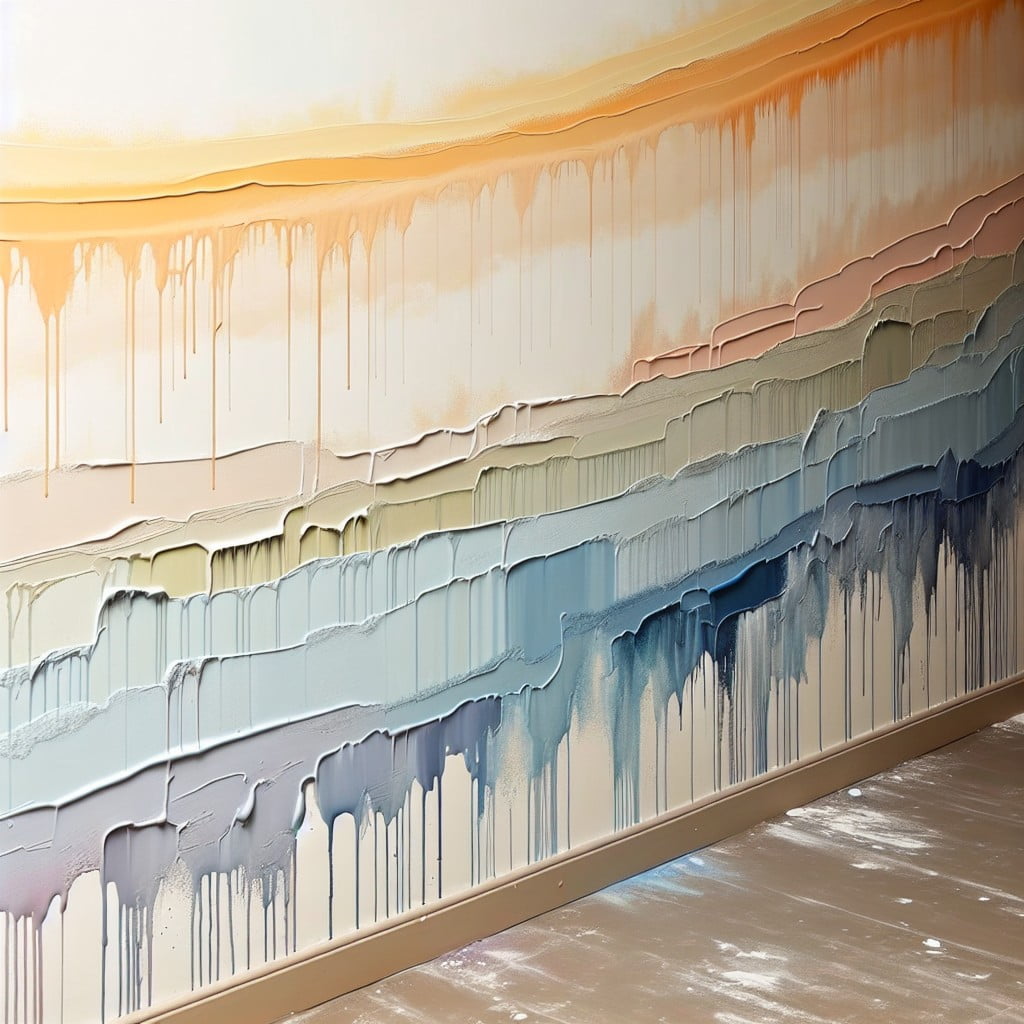
Temperature and humidity significantly affect the drying process of latex paint. When the temperature is too low, or the humidity is too high, the drying time will be extended because the water in the paint cannot evaporate quickly. Conversely, when it’s warm and less humid, paint dries faster as the water evaporates at a quicker pace.
Here’s what you need to know to ensure optimal drying conditions:
- The ideal temperature for painting with latex products is between 50-70°F (10-21°C).
- Humidity levels should preferably be below 50% to facilitate faster drying.
- Cold air slows down the drying process, while warm air speeds it up.
- Excessively high humidity can lead to problems such as sagging or a tacky finish that doesn’t cure properly.
Always check the weather forecast if you’re planning to paint, especially if you’re working outdoors. For indoor projects, control the environment using air conditioning or dehumidifiers to maintain a consistent temperature and humidity level.
Role of Ventilation in Paint Drying
Proper ventilation is crucial in expediting the drying process of latex paint. Sustained airflow helps evaporate the water and solvents in the paint more rapidly, reducing drying time.
Open windows or use fans to circulate air across the painted surfaces for enhanced drying efficiency. Avoid directing strong wind onto the wet surface though, as this can cause uneven drying or debris to stick to the paint.
Additionally, ensure that the room is well-ventilated even after the paint feels dry to the touch, allowing for the complete release of any volatile organic compounds (VOCs) and to fully cure the paint film.
Remember, a steady airflow contributes significantly to a smoother and faster drying process.
Surface Conditions and Preparation
The condition and preparation of the surface directly affect how quickly latex paint will dry. Porous surfaces like new drywall or unprimed wood absorb more moisture, extending drying time.
Cleanliness: Ensure the surface is free of dust, dirt, and grease. These contaminants can slow drying and compromise paint adhesion.
Priming: Priming seals porous surfaces and provides a uniform base, promoting even drying.
Smoothness: Sanding to create a smooth surface helps the paint adhere better and dry faster. Uneven textures can lead to longer drying times.
Repairs: Fill in cracks and holes before painting. Paint tends to settle in these areas and takes longer to dry.
Dryness: The painting surface must be completely dry before application. Moisture from previous cleaning or rain can prolong the drying process.
Adhering to these points ensures optimal drying and a professional-looking finish.
Latex Paint Application Techniques
Achieving an even application and optimal drying conditions begins long before the paint dries. To ensure a smooth process, start with a properly cleaned and primed surface. Bypassing these steps can lead to uneven absorption, which affects drying time. When you’re ready to paint, stir the latex paint thoroughly to ensure uniform consistency.
Apply with a high-quality brush or roller capable of giving you even coverage. Brushes work well for trim and smaller areas, while rollers are ideal for large surfaces. A paint sprayer can also be used for an efficient and even application, especially for expansive or textured surfaces. Regardless of your tool choice, avoid overloading it with paint, which can lead to drips and extended drying time.
For consistent drying, work in manageable sections and maintain a wet edge to avoid lap marks. This means you should overlap the edges of the last stroke with the next, keeping a consistent application speed. Use light to moderate pressure – pressing too hard can remove too much paint or leave unsightly marks.
Remember, the thickness of your paint layer matters. Heavier coats take longer to dry and are more prone to issues. Aim for thin coats – they will dry faster and you can always add more if necessary. This ensures quicker drying times and better adhesion to the surface, prolonging the lifespan of your paint job.
Latex Vs. Oil-Based Paint: Drying and Curing Considerations
Latex paint, known for its quick-drying capability, typically becomes touch-dry within 1 to 2 hours, allowing for a second coat in as little as 4 hours. This is due to its water-based formula, which allows water to evaporate rapidly from the paint, speeding up the drying process.
In contrast, oil-based paints, prized for their durability and rich finish, have a longer drying time, usually requiring 6 to 8 hours to become touch-dry and a full 24 hours before a second coat can be safely applied. The solvent in oil-based paints evaporates more slowly than water, extending the drying time.
Additionally, while latex paints cure in approximately 2 to 3 weeks, oil-based paints may need up to a month to fully cure. Curing refers to the process of paint reaching its maximum hardness and durability. During this period, it’s important to avoid scrubbing or washing the painted surface.
Keep in mind that while latex and oil paints differ in these aspects, both types will be affected by environmental conditions such as temperature, humidity, and airflow. Cooler temperatures and higher humidity can prolong drying and curing times for both types of paint.
Safety Measures: When to Reoccupy a Painted Space
Ensuring the safety of your environment following a painting project is crucial. Once latex paint is dry to the touch, which typically occurs within an hour, the space may feel ready for use. However, the paint emits volatile organic compounds (VOCs) as it cures, so it’s important to wait until it has fully cured before fully reoccupying the space. Full curing can take up to one month, but here are some key points to consider for safety and optimal results:
- Ventilation: Keep the area well-ventilated for 2-3 days after applying latex paint. Open windows and use fans to circulate fresh air and expedite the dissipation of VOCs.
- Odor Sensitivity: For individuals sensitive to smells or with respiratory concerns, it’s advisable to wait at least 24 hours before spending extended periods in the newly painted area.
- Children and Pets: To prevent health risks, keep children and pets away from freshly painted surfaces until the space is fully aired out and the paint is thoroughly dry.
- Furniture and Fixtures: Although you can move furniture back within a few hours, avoid heavy handling or washing of painted surfaces for about two weeks to avoid damaging the paint finish.
Closely adhering to these guidelines will help to maintain the aesthetic appeal of your paint job while also protecting the well-being of those who use the space.
FAQ
How long does latex paint take to fully dry?
Latex paint typically takes between 2 and 4 weeks to fully dry.
How long should paint cure before putting stuff on it?
The recommended period to allow paint to cure before placing items on it is 5-10 days.
How long to let latex paint dry before hanging pictures?
Latex paint typically requires a drying period of at least one day before hanging pictures, though waiting two to three days can provide added safety.
Can the drying time of latex paint vary with different weather conditions?
Yes, the drying time of latex paint can indeed vary based on different weather conditions.
What is the recommended dry time for latex paint when applied to different surfaces?
The recommended dry time for latex paint typically ranges from one to two hours when applied to a variety of surfaces.
Does the number of coats affect how long latex paint takes to dry?
Yes, the number of coats directly impacts the drying time of latex paint as each additional layer requires more time to dry.
Recap:




